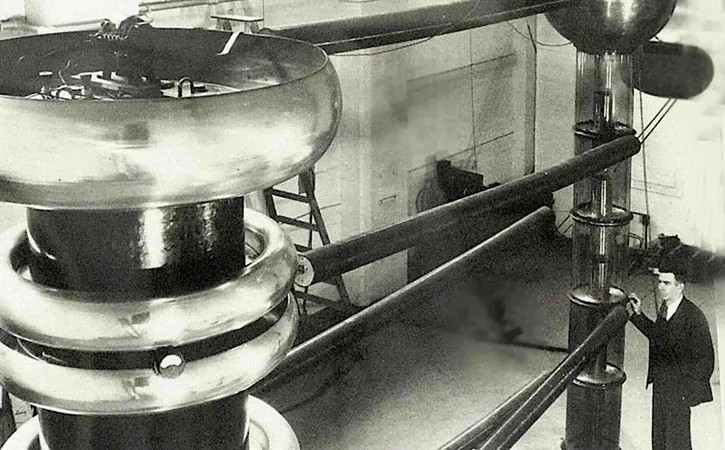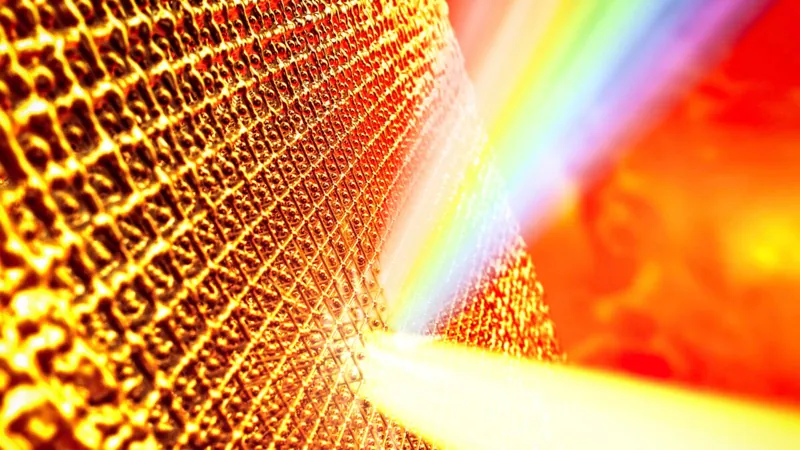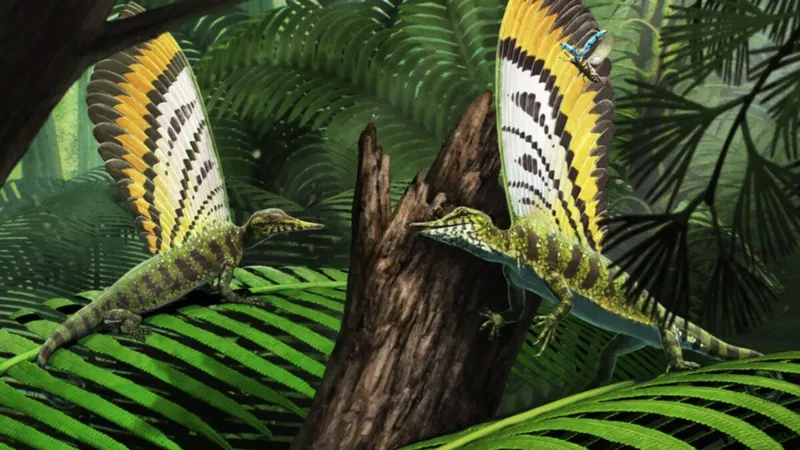
Rediscovered: The Lost Fusion Breakthrough of 1938 Recreated by Modern Physicists
2025-07-09
Author: Ting
A Century-Old Fusion Discovery Reclaimed
In an astonishing turn of events, a groundbreaking fusion experiment from 1938 has been resurrected by a dedicated team of physicists. Originally conducted by University of Michigan’s Arthur Ruhlig, this accidental discovery marked the first recorded observation of deuterium-tritium (DT) fusion. Despite its historic significance, Ruhlig's findings faded into obscurity—until now.
The Revival of a Forgotten Experiment
Recent efforts led by scientists at Los Alamos, in collaboration with Duke University, have unearthed and replicated Ruhlig’s long-neglected experiment. This revival not only validates his original claims but also provides essential insights into the foundations of nuclear physics, shaping both energy development and national defense technologies.
Tracing the Roots of DT Fusion
The DT fusion reaction is pivotal for contemporary fusion energy technologies, yet the origin of its first evidence had remained a mystery. In 2023, physicists Mark Chadwick and Mark Paris from Los Alamos embarked on a historical investigation into nuclear fusion’s early days. Their inquiries led to a critical question: What inspired physicist Emil Konopinski to endorse DT fusion at a 1942 conference hosted by J. Robert Oppenheimer?
Unlocking Hidden Clues through Archival Research
Digging deeper, Chadwick discovered a 1986 audio recording where Konopinski credited his interest in DT fusion to 'pre-war' research. This revelation set the stage for the team’s critical investigation into Ruhlig’s original letter published in Physical Review, where he had observed high-energy reactions involving tritium and deuterium, ultimately concluding that DT fusion was 'exceedingly probable.'
Recreating History with Modern Technology
With new findings in hand, the next step was to recreate Ruhlig's 1938 experiment using advanced scientific equipment. Following approval from Los Alamos Lab Director Thom Mason, the team collaborated with Duke University’s Triangle Universities Nuclear Laboratory. They utilized a deuteron beam to replicate the original conditions, successfully tracking neutron emissions from secondary DT fusion reactions, a feat never previously accomplished at such low energy levels.
Ruhlig's Findings Confirmed—but with a Twist
The results of the modern experiment affirmed that secondary DT reactions are indeed viable under the right conditions. Interestingly, while Ruhlig had overestimated the frequency of these reactions, the new findings validated his core premise. Chadwick asserted that although Ruhlig’s specific numbers may not align perfectly with contemporary data, his qualitative insights about DT fusion’s likelihood were undeniably correct.
Honoring a Forgotten Pioneer of Nuclear Physics
This revival of Ruhlig’s work not only sheds light on the history of fusion research but also integrates his contributions into today's scientific narrative. The team expressed pride in resurrecting his legacy, marking this discovery as a significant acknowledgment of Ruhlig’s impact on modern nuclear physics.
Publishing a Legacy in Scientific Literature
As a tribute to Ruhlig’s pioneering contributions, the team published their findings in Physical Review—the same journal that initially showcased his work in 1938. This new paper, titled 'Modern version of the uncited 1938 experiment that first observed DT fusion,' bridges past and present, further enhancing our understanding of fusion science.



 Brasil (PT)
Brasil (PT)
 Canada (EN)
Canada (EN)
 Chile (ES)
Chile (ES)
 Česko (CS)
Česko (CS)
 대한민국 (KO)
대한민국 (KO)
 España (ES)
España (ES)
 France (FR)
France (FR)
 Hong Kong (EN)
Hong Kong (EN)
 Italia (IT)
Italia (IT)
 日本 (JA)
日本 (JA)
 Magyarország (HU)
Magyarország (HU)
 Norge (NO)
Norge (NO)
 Polska (PL)
Polska (PL)
 Schweiz (DE)
Schweiz (DE)
 Singapore (EN)
Singapore (EN)
 Sverige (SV)
Sverige (SV)
 Suomi (FI)
Suomi (FI)
 Türkiye (TR)
Türkiye (TR)
 الإمارات العربية المتحدة (AR)
الإمارات العربية المتحدة (AR)